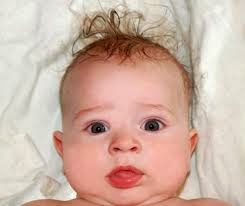Many men start balding at a young age. This can be very detrimental for ones confidence and self-esteem. That is why it is important to learn about hair loss solutions for young men. This article will go over four different methods to helps prevent further hair fall.
Hair Loss Solutions for Young Men - 4 Tips
Live a Healthy Lifestyle
Many men don't understand how important it is to live healthy in order to keep hair healthy. Having a diet consisting of cigarettes, caffeine, and refined carbohydrates will destroy your hair follicles over time. However, exercising and taking in essential vitamins can help prevent hair fall. Try to get your daily dose of essential B vitamins. Also, foods such as eggs, spinach, chicken, and nuts contain Biotin, a vitamin which helps hair growth.
Many men don't understand how important it is to live healthy in order to keep hair healthy. Having a diet consisting of cigarettes, caffeine, and refined carbohydrates will destroy your hair follicles over time. However, exercising and taking in essential vitamins can help prevent hair fall. Try to get your daily dose of essential B vitamins. Also, foods such as eggs, spinach, chicken, and nuts contain Biotin, a vitamin which helps hair growth.
Try a Hair Loss Treatment
There are all sorts of hair regrowth treatments. Some treatments are completely natural while others contain chemicals which help follicle help. Some of the most popular treatments contain Minoxidil while others contain Biotin, Saw Palmetto, and other ingredients to help grow hair. The most important thing is to find a treatment that you will stick to and use regularly. Missing treatments can keep hair from growing and make your hair regrowth journey that much harder.
There are all sorts of hair regrowth treatments. Some treatments are completely natural while others contain chemicals which help follicle help. Some of the most popular treatments contain Minoxidil while others contain Biotin, Saw Palmetto, and other ingredients to help grow hair. The most important thing is to find a treatment that you will stick to and use regularly. Missing treatments can keep hair from growing and make your hair regrowth journey that much harder.
Two products I have personally had success with are Provillus and Bosley Revive. Provillus is a product which contains a Minoxidil topical treatment and a natural supplement. Both work together to help add regrowth to my scalp. Bosley Revive is a hair loss shampoo, conditioner, and foam. I use all three at least once daily when I shower and it helps the thickness and health of my hair.
Deal With It
One way to deal with balding is to let it run its course. Many men decide to take this route so you are not alone. However, I have some suggestions in case you were deciding to just go bald. First off, make sure your hair is managed and tidy. Some men who let their hair fall out completely don't shave their heads. Nothing looks worse than a man growing his hair out while suffering from pattern baldness. Everyone can tell and no one thinks it looks good. You would be surprised at how you look bald if you never have been, and it probably is not as bad as you think.
One way to deal with balding is to let it run its course. Many men decide to take this route so you are not alone. However, I have some suggestions in case you were deciding to just go bald. First off, make sure your hair is managed and tidy. Some men who let their hair fall out completely don't shave their heads. Nothing looks worse than a man growing his hair out while suffering from pattern baldness. Everyone can tell and no one thinks it looks good. You would be surprised at how you look bald if you never have been, and it probably is not as bad as you think.
Take Care of Your Hair
Stop using harsh products and gels. Don't pick up that cheap hair spray at the store any longer. If you do not take care of your hair then it will not take care of itself. Focus on using natural hair care products that won't be detrimental to your follicles over time.
Stop using harsh products and gels. Don't pick up that cheap hair spray at the store any longer. If you do not take care of your hair then it will not take care of itself. Focus on using natural hair care products that won't be detrimental to your follicles over time.
These are four hair loss solutions for young men. You can either deal with it or fight it. Personally, I decided to fight my balding with treatments and by changing my lifestyle. It has been working for me so far after two years.
My name is Corey Will and I have been researching hair loss for over two years. My website is http://www.solutionsforhairloss.org and it is about 6 months old. I provide people with information on hair loss solutions and hair growth treatments. My goal is to give the best quality information to my readers absolutely free. Check out my article about Hair Loss Solutions.
Thanks for taking the time to read this article.
Article Source: http://EzineArticles.com/?expert=Corey_F_Will



.jpg)













.jpg)



.jpg)




